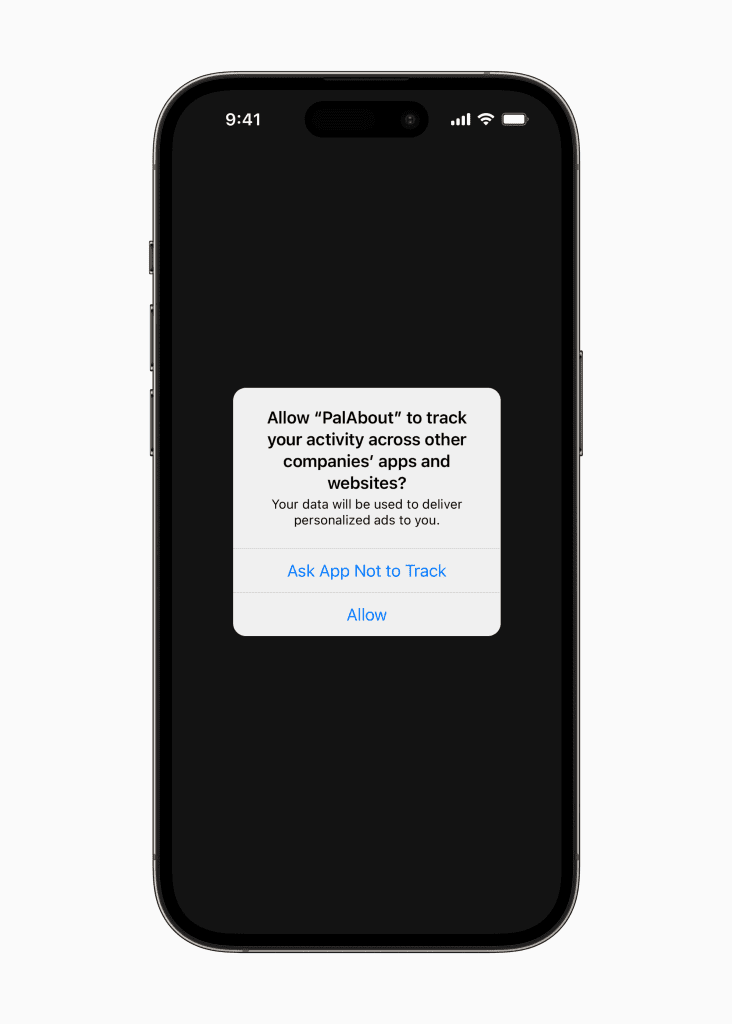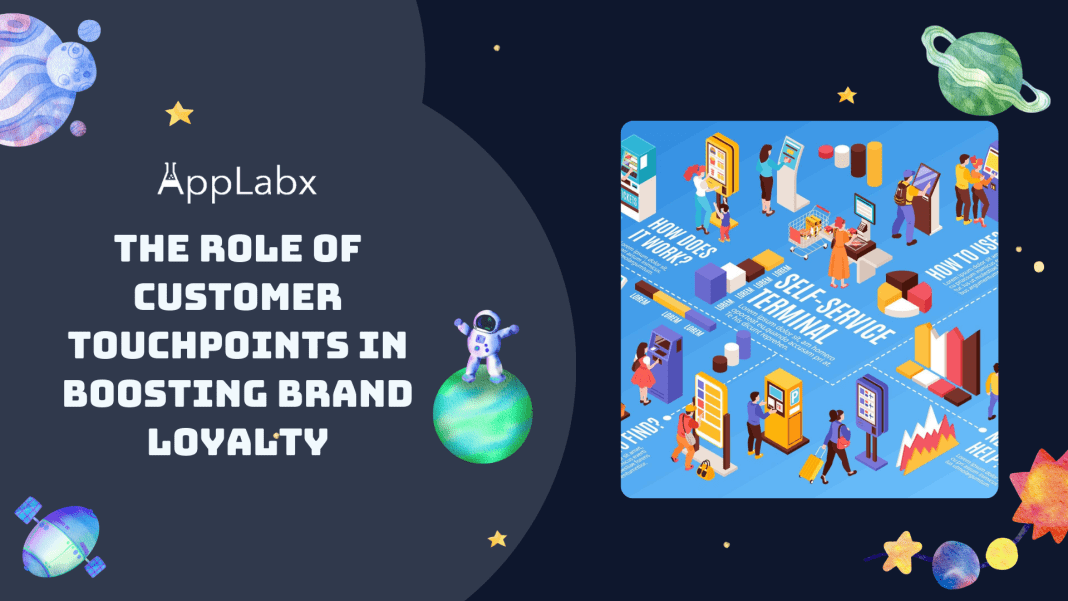Key Takeaways
- Strategic Touchpoint Management is Key: Discover how crafting positive, consistent experiences across customer touchpoints forms the foundation for building and boosting brand loyalty.
- Data Insights Drive Lasting Connections: Uncover the power of metrics like CSAT, NPS, and Conversion Rates, leveraging data-backed strategies to understand, measure, and enhance the effectiveness of customer touchpoints.
- Continuous Improvement for Enduring Success: Embrace A/B testing, customer journey mapping, and adaptability as essential tools in the continuous journey of improving touchpoints, ensuring your brand stands out in a dynamic marketplace.
In the ever-evolving landscape of business and consumer relations, the quest for brand loyalty stands as an enduring pursuit for companies seeking to establish a lasting connection with their clientele.
In this digital age, where consumers are bombarded with choices and alternatives, the role of customer touchpoints emerges as a pivotal factor in shaping and solidifying brand loyalty.
This comprehensive exploration delves into the intricate dynamics of customer touchpoints, unraveling their significance in the broader tapestry of brand loyalty enhancement.

Defining Customer Touchpoints: Unveiling the Power of Interaction
At the heart of every successful brand-consumer relationship lies a series of interactions known as customer touchpoints.
These touchpoints encompass every instance where a consumer comes into contact with a brand, be it before, during, or after a purchase.
From the initial discovery phase to the post-purchase engagement, each touch point represents a golden opportunity for brands to leave a lasting impression, fostering a sense of connection that transcends the transactional.
In a world inundated with marketing messages and digital noise, understanding the multifaceted nature of customer touchpoints becomes paramount.
It’s not just about making a sale; it’s about curating an experience that resonates with the customer on a personal level.
From the enticing allure of a well-crafted social media post to the seamless navigation of an e-commerce platform, every touch point contributes to the overall perception of the brand in the consumer’s mind.
Why Brand Loyalty Matters: Navigating the Competitive Landscape
Before we embark on our journey into the intricacies of customer touchpoints, let’s underscore the immense value of brand loyalty in today’s fiercely competitive market.
Beyond the immediate financial gains, brand loyalty serves as a linchpin for sustained success and resilience in the face of market fluctuations.
Loyal customers not only contribute to a significant portion of a brand’s revenue but also serve as brand advocates, willingly sharing positive experiences and recommendations with their networks.
As companies vie for consumer attention and market share, cultivating brand loyalty emerges as a strategic imperative. It goes beyond merely offering a superior product or service; it extends into the realm of building emotional connections and memorable experiences.
This is where the concept of customer touchpoints comes into play as the orchestrator of a symphony of interactions that, when harmonized effectively, create a melody of brand loyalty that resonates with customers for years to come.
Navigating the Blog’s Focus: The Symbiosis of Touchpoints and Loyalty
In the following chapters, we will embark on an enlightening exploration of customer touchpoints, dissecting their various forms and manifestations across the consumer journey.
From the initial spark of awareness to the ongoing post-purchase relationship, we will unravel the threads that weave together to create a tapestry of brand loyalty.
Stay tuned as we delve into the impact of customer touchpoints on brand loyalty, exploring strategies employed by industry leaders to enhance these interactions.
Through real-life case studies, actionable insights, and a thorough examination of challenges and solutions, this blog aims to be your compass in navigating the intricate landscape of customer touchpoints and their pivotal role in boosting brand loyalty.
Join us on this insightful journey, where every touch point becomes a brushstroke in the masterpiece of brand-consumer relationships.
But, before we venture further, we like to share who we are and what we do.
About AppLabx
From developing a solid marketing plan to creating compelling content, optimizing for search engines, leveraging social media, and utilizing paid advertising, AppLabx offers a comprehensive suite of digital marketing services designed to drive growth and profitability for your business.
AppLabx is well known for helping companies and startups use digital marketing to drive web traffic to their websites and web apps.
At AppLabx, we understand that no two businesses are alike. That’s why we take a personalized approach to every project, working closely with our clients to understand their unique needs and goals, and developing customized strategies to help them achieve success.
If you need a digital consultation, then send in an inquiry here.
The Role of Customer Touchpoints in Boosting Brand Loyalty
- Understanding Customer Touchpoints
- The Impact of Customer Touchpoints on Brand Loyalty
- Strategies to Enhance Customer Touchpoints
- Overcoming Challenges in Managing Customer Touchpoints
- Measuring the Effectiveness of Customer Touchpoints
1. Understanding Customer Touchpoints
In the dynamic realm of modern business, comprehending the intricacies of customer touchpoints is akin to wielding a compass in the uncharted waters of consumer interactions.
Let’s embark on a comprehensive journey to dissect and illuminate the various facets of customer touchpoints, exploring their definitions, types, and profound impact on brand-consumer relationships.

Defining Customer Touchpoints
At its core, a customer touchpoint refers to any interaction a consumer has with a brand throughout their journey – from the initial awareness stage to post-purchase engagement.
These touchpoints can manifest across diverse channels, including digital platforms, physical stores, customer service interactions, and beyond.
Digital Touchpoints: In our digitally-driven age, online interactions play a pivotal role. Social media engagements, website visits, and email interactions are prime examples.
As of October 2023, there were 5.3 billion internet users worldwide, which amounted to 65.7 per cent of the global population, emphasizing the influence of these platforms as customer touchpoints.
Physical Touchpoints: Traditional brick-and-mortar establishments, events, and product packaging also constitute touchpoints.
A study found that 82% of consumers’ purchasing decisions are made when they are inside a store, underscoring the significance of these tangible interactions.
Different Types of Customer Touchpoints
To gain a nuanced understanding, it’s essential to categorize touchpoints based on their occurrence in the consumer journey.
Three primary phases emerge pre-purchase, purchase, and post-purchase touchpoints.
Pre-purchase Touchpoints
Social Media Influence: Platforms like Instagram and Facebook serve as preeminent arenas for brand discovery. 54% of social media users use social media to research products.
Online Reviews and Testimonials: Websites like Yelp, Amazon, or dedicated review platforms are crucial pre-purchase touchpoints. A BrightLocal survey reveals that 76% of consumers “regularly” read online reviews when browsing for local businesses.

Purchase Touchpoints
Checkout Process: Seamless online transactions and hassle-free in-store checkouts significantly impact the overall customer experience. 69.57% of online shopping carts are abandoned.
In-Store Assistance: For physical retailers, knowledgeable and accessible staff contribute to a positive purchase touchpoint.
Post-purchase Touchpoints
Customer Service Interactions: Effective post-purchase customer service is paramount. A Microsoft survey found that 96% of respondents say customer service is important in their choice of loyalty to a brand.
Product Follow-ups: Brands that follow up with customers after purchase garner increased loyalty.
According to a study by Accenture, eighty-three per cent of consumers are willing to share their data to enable a personalized experience as long as businesses are transparent about how they are going to use it and that customers have control over it.
2. The Impact of Customer Touchpoints on Brand Loyalty
Understanding the profound impact that customer touchpoints wield in shaping brand loyalty is essential for businesses striving to create meaningful, enduring relationships with their clientele.
This segment delves into the intricate ways in which customer touchpoints influence brand loyalty, backed by real-world examples and substantiated by relevant data and statistics.

Building Positive Experiences: The Cornerstone of Brand Loyalty
- Personalization in Customer Interactions:
- According to a study by Deloitte, 36% of consumers say they are interested in personalized products or services, emphasizing the importance of tailored customer interactions.
- Example: Amazon’s personalized recommendations, based on users’ browsing and purchasing history.
- Consistency Across Touchpoints:
- Maintaining a consistent brand image across various touchpoints is crucial. A survey found that consistent brand presentation across all platforms can increase revenues by up to 23%.
- Example: Coca-Cola’s consistent branding has been from its iconic red colour to the universally recognized logo.

Identifying Key Touchpoints for Maximum Impact
- Social Media Engagement:
- Brands that actively engage with customers on social media platforms experience increased loyalty.
- Example: Starbucks’ interactive social media campaigns, like the annual #RedCupContest, create a sense of community and boost brand loyalty.
- Customer Service Interactions:
- Efficient and empathetic customer service positively impacts brand loyalty. 56% of global respondents have stopped doing business with a brand due to a poor customer service experience.
- Example: Zappos, renowned for its exceptional customer service, attributes a significant portion of its success to customer loyalty.
- Product Packaging and Delivery:
- The unboxing experience contributes to brand perception. 40% of consumers are likely to make repeat purchases from an online merchant with premium packaging.
- Example: Apple’s meticulous packaging design and attention to detail enhance the overall product experience, fostering loyalty among its user base.

Strategies to Enhance Customer Touchpoints for Loyalty
- Utilizing Technology for Seamless Interactions:
- AI-powered chatbots and virtual assistants enhance customer support.
- Example: Chatbots on websites like Shopify assist users in navigating product selections, providing real-time support.
- Implementing a Multichannel Approach:
- Integrating online and offline touchpoints creates a cohesive customer experience. A Harvard Business Review study found that the remaining majority, or 73%, used multiple channels during their shopping journey.
- Example: Nike seamlessly integrates its online and offline presence, allowing customers to browse, purchase, and engage across various channels.
- Collecting and Utilizing Customer Feedback:
- Valuable insights from customer feedback inform improvements. 91% of consumers read online reviews, from books to clothes to health insurance.
- Example: Airbnb actively seeks feedback from both hosts and guests to enhance the overall user experience and build trust.

3. Strategies to Enhance Customer Touchpoints
Crafting an effective strategy to enhance customer touchpoints is pivotal in today’s competitive business landscape.
This segment delves into actionable strategies, incorporating data-backed insights and real-world examples to guide businesses in optimizing their touchpoints for maximum impact on brand loyalty.

Utilizing Technology for Seamless Interactions
- AI-Powered Customer Support:
- The majority of customer service interactions will still be handled by humans despite the rise of AI, indicating the integral role AI plays in customer support.
- Example: Chatbots on platforms like Facebook Messenger and websites use AI to provide instant responses, streamlining customer interactions and problem resolution.
- Mobile Apps and User-Friendly Websites:
- In January 2023, mobile devices excluding tablets accounted for nearly 57 percent of web page views worldwide, underscoring the importance of mobile-friendly platforms.
- Example: The Starbucks mobile app not only allows users to order ahead but also offers personalized recommendations, enhancing the overall customer experience.

Implementing a Multichannel Approach
- Integrating Offline and Online Touchpoints:
- A Harvard Business Review study found that the remaining majority, or 73%, used multiple channels during their shopping journey, emphasizing the need for seamless integration.
- Example: Brands like Nike seamlessly merge their online and offline presence, enabling customers to engage across various channels effortlessly.
- Email Marketing and Newsletters:
- In a late 2022 poll, around half of marketing professionals surveyed reported a two times improvement rate in their e-mail marketing campaigns’ ROI, making it a powerful channel for customer engagement.
- Example: Amazon’s personalized email campaigns, featuring product recommendations based on past purchases, contribute to increased customer retention.
Collecting and Utilizing Customer Feedback
- Surveys and Feedback Forms:
- 91% of consumers read online reviews, from books to clothes to health insurance, highlighting the significance of gathering feedback.
- Example: Google actively collects user feedback through its review system, allowing businesses to understand and respond to customer opinions.
- Social Listening:
- 71% are more likely to recommend a brand to others if they have a positive social media experience.
- Example: Brands like Apple use social listening tools to monitor online conversations, enabling them to address concerns and showcase responsiveness.
4. Overcoming Challenges in Managing Customer Touchpoints
Effectively managing customer touchpoints is a nuanced endeavor, rife with challenges that businesses must navigate to ensure a seamless and positive customer experience.
In this segment, we delve into the common hurdles faced in touchpoint management, offering practical solutions and drawing insights from real-world examples and pertinent data.

Consistency Across Channels
- The Challenge: Ensuring Uniform Brand Presentation:
- Issue: Maintaining a consistent brand image across various touchpoints can be challenging, leading to a disjointed customer experience.
- Solution: Implement a robust brand guideline system to ensure consistency in visual elements, messaging, and tone across all channels.
- The Impact of Inconsistency:
- Consistent brand presentation across all platforms can increase revenue by up to 23%.
- Example: McDonald’s globally recognized golden arches and consistent colour scheme contribute to a cohesive brand identity across its diverse locations.
Handling Negative Touchpoint Experiences
- The Challenge: Addressing Customer Complaints Effectively:
- Issue: Negative touchpoint experiences, such as poor customer service or product issues, can significantly impact brand perception.
- Solution: Implement a proactive customer service strategy that addresses issues swiftly, utilizing feedback to drive improvements.
- The Cost of Poor Customer Service:
- 60% have stopped doing business with a brand due to a single poor customer service experience.
- Example: Southwest Airlines, known for its exceptional customer service, actively addresses complaints on social media, showcasing a commitment to customer satisfaction.

Adapting to Evolving Customer Expectations
- The Challenge: Staying Ahead of Changing Consumer Demands:
- Issue: Customer expectations evolve rapidly, necessitating businesses to adapt and incorporate new technologies and strategies.
- Solution: Regularly conduct market research and embrace innovation to stay attuned to shifting consumer needs.
- The Need for Adaptability: Netflix’s recommendation algorithm adapts to user preferences, offering a personalized content experience based on viewing history.

Consistency Across Offline and Online Touchpoints
- The Challenge: Integrating Online and Offline Experiences Seamlessly:
- Issue: Achieving a unified customer journey that seamlessly transitions between online and offline touchpoints can be complex.
- Solution: Leverage technology to bridge the gap, implementing systems that synchronize data and maintain consistency.
- The Impact of Multichannel Integration: Home Depot integrates its online and offline touchpoints, allowing customers to research products online and make purchases in-store or through the website.

Navigating the Complexity of Data Privacy
- The Challenge: Balancing Personalization with Privacy Concerns:
- Issue: Collecting and utilizing customer data for personalization can raise privacy concerns, impacting the delicate balance between customization and intrusion.
- Solution: Implement transparent data policies, ensuring customers are informed and in control of their data.
- The Impact of Data Privacy Concerns: Apple’s commitment to user privacy, highlighted by features like App Tracking Transparency, resonates with customers increasingly concerned about data protection.

5. Measuring the Effectiveness of Customer Touchpoints
Measuring the effectiveness of customer touchpoints is essential for businesses aiming to optimize their strategies and enhance brand loyalty.
In this comprehensive exploration, we delve into key metrics, methodologies, and real-world examples, supported by relevant data and statistics.

Key Performance Indicators (KPIs) for Touchpoints
- Customer Satisfaction (CSAT):
- CSAT measures customer satisfaction through surveys typically presented as a simple question with a rating scale.
- Example: Uber uses CSAT surveys to gauge passenger satisfaction after each ride, influencing driver ratings and overall service improvement.
- Net Promoter Score (NPS):
- NPS gauges customer loyalty by asking, “How likely is it that you would recommend our company to a friend or colleague?”
- NPS leaders “outgrow their competitors” by 2.5 times.
- Example: Apple frequently uses NPS surveys to assess customer loyalty and has consistently maintained high scores in the tech industry.
- Conversion Rate:
- The conversion rate tracks the percentage of visitors who take a desired action, such as making a purchase or filling out a form.
- Example: Amazon closely monitors conversion rates on its product pages, continually refining the user experience to drive more purchases.
Analyzing Customer Feedback and Reviews
- Surveys and Feedback Forms:
- Utilize surveys and feedback forms to gather direct insights from customers about their experiences.
- Example: Airbnb actively collects feedback from both hosts and guests, using it to enhance the overall user experience and build trust.
- Social Listening:
- Monitor social media platforms and online forums for mentions, comments, and sentiments related to the brand.
- Example: Starbucks actively engages in social listening, addressing customer concerns on platforms like Twitter and Instagram.
Metrics for Digital Touchpoints
- Website Analytics:
- Leverage tools like Google Analytics to track website metrics, including page views, bounce rates, and user engagement.
- Example: HubSpot employs website analytics to assess the performance of its blog posts, optimizing content based on user engagement metrics.
- Email Marketing Metrics:
- Key email marketing metrics include open rates, click-through rates, and conversion rates.
- Example: Amazon tailors email campaigns based on user behavior, driving higher engagement and sales.

Continuous Improvement Strategies
- A/B Testing:
- Implement A/B testing to compare two versions of a webpage or email to determine which performs better.
- Example: Google frequently conducts A/B testing on its search engine interface to refine user experience and enhance effectiveness.
- Customer Journey Mapping:
- Create visual representations of the customer journey to identify pain points and areas for improvement.
- Companies that use tools like customer journey maps reduce their cost of service by 15-20%.
- Example: Disney employs customer journey maps to enhance the theme park experience, identifying touchpoints for better visitor satisfaction.
Conclusion
In the intricate dance between brands and consumers, the role of customer touchpoints emerges as a powerful orchestrator, weaving the threads that form the tapestry of brand loyalty.
As we conclude our exploration into the symbiotic relationship between these touchpoints and unwavering customer allegiance, it becomes evident that the art and science of managing these interactions shape the very essence of successful modern businesses.
Crafting Lasting Impressions Through Every Interaction
From the initial spark of awareness to the post-purchase engagement, every customer touchpoint is a brushstroke contributing to the masterpiece of brand-consumer relationships.
In a world where choices abound, creating memorable and positive experiences becomes a strategic imperative.
The allure of a well-designed website, the warmth of a personalized customer service interaction, and the seamless transition between online and offline touchpoints collectively mould the perception customers hold of a brand.
Strategies That Stand the Test of Consumer Expectations
Our exploration unveiled a plethora of strategies employed by industry leaders to enhance customer touchpoints.
Leveraging technology for seamless interactions, implementing a multichannel approach, collecting and utilizing customer feedback, and adapting to evolving customer expectations are not merely tactics.
They are the pillars upon which successful brand-consumer relationships are built.
Realizing the Impact: Data, Metrics, and Success Stories
From the exponential growth of companies with high Net Promoter Scores to the proven success of personalized customer experiences, the data substantiates the significance of effective touchpoint management.
Metrics like Customer Satisfaction (CSAT), Net Promoter Score (NPS), and Conversion Rates serve as navigational tools, guiding businesses toward a deeper understanding of their customers.
Overcoming Challenges: A Prelude to Success
Yet, the path to mastering customer touchpoints is not without its challenges.
Consistency across channels, handling negative touchpoint experiences, adapting to evolving customer expectations, seamlessly integrating online and offline touchpoints, and navigating the complexities of data privacy are hurdles that demand strategic solutions.
However, these challenges, when surmounted, become stepping stones to success, differentiating businesses in a crowded marketplace.
The Continuous Journey of Improvement
Our journey through the intricacies of customer touchpoints emphasized the importance of continuous improvement.
A/B testing, customer journey mapping, and a commitment to adaptability form the nucleus of strategies that propel brands forward.
The insights gained from measuring the effectiveness of touchpoints serve not just as performance indicators but as catalysts for innovation and growth.
The Final Note: Nurturing Connections That Withstand Time
In the grand tapestry of business, customer touchpoints are the threads that bind brands and consumers in a relationship built on trust, satisfaction, and loyalty.
The final note in this symphony is an acknowledgement of the dynamic nature of the consumer landscape.
As businesses navigate this dynamic landscape, embracing the art and science of managing customer touchpoints, they embark on a journey towards not just customer satisfaction, but customer advocacy.
The brands that succeed in creating a seamless, personalized, and consistently positive journey across touchpoints will not only boost brand loyalty but also stand the test of time in an ever-evolving marketplace.
May this exploration serve as a guide, an inspiration, and a testament to the transformative power of understanding and mastering the role of customer touchpoints in fostering enduring brand loyalty.
If you are looking for a top-class digital marketer, then book a free consultation slot here.
If you find this article useful, why not share it with your friends and business partners, and also leave a nice comment below?
We, at the AppLabx Research Team, strive to bring the latest and most meaningful data, guides, and statistics to your doorstep.
To get access to top-quality guides, click over to the AppLabx Blog.
People also ask
What is the role of customer touchpoints?
Customer touchpoints play a pivotal role in shaping brand experiences. From initial awareness to post-purchase interactions, they are crucial moments where customers engage with a brand. Strategic management of touchpoints enhances customer satisfaction, fosters loyalty, and contributes to overall brand success.
How important is customer service to brand loyalty?
Customer service is paramount to brand loyalty. It’s the linchpin of customer experience, directly impacting satisfaction and loyalty. Exceptional service builds trust, encourages repeat business, and transforms customers into brand advocates, contributing significantly to a brand’s long-term success.
What role do a business’s touchpoints play in its brand?
A business’s touchpoints are critical elements influencing brand perception. From websites to customer service, each interaction shapes how the brand is perceived. Strategic management of touchpoints ensures a consistent, positive experience, fostering brand loyalty and trust among consumers.




































